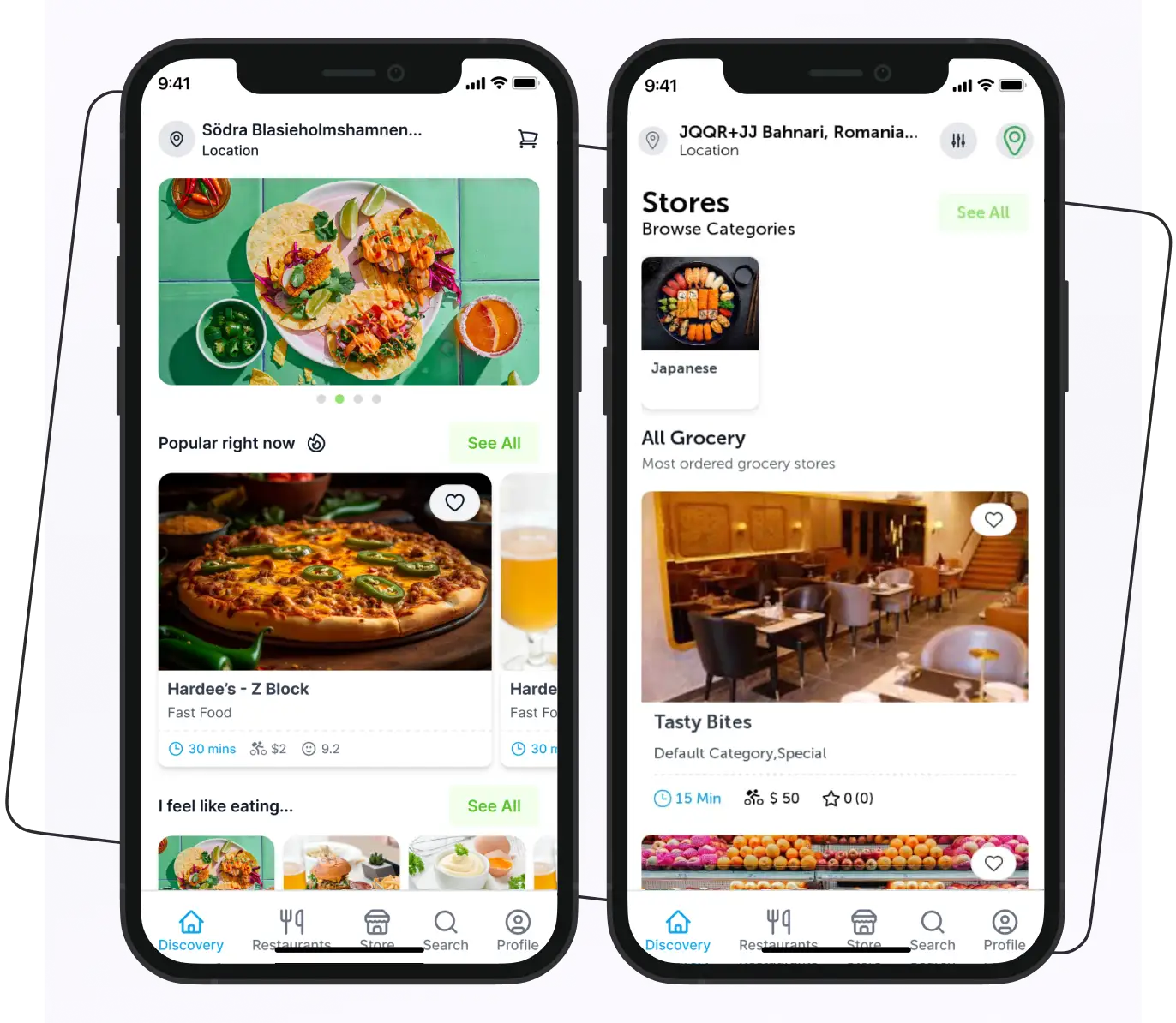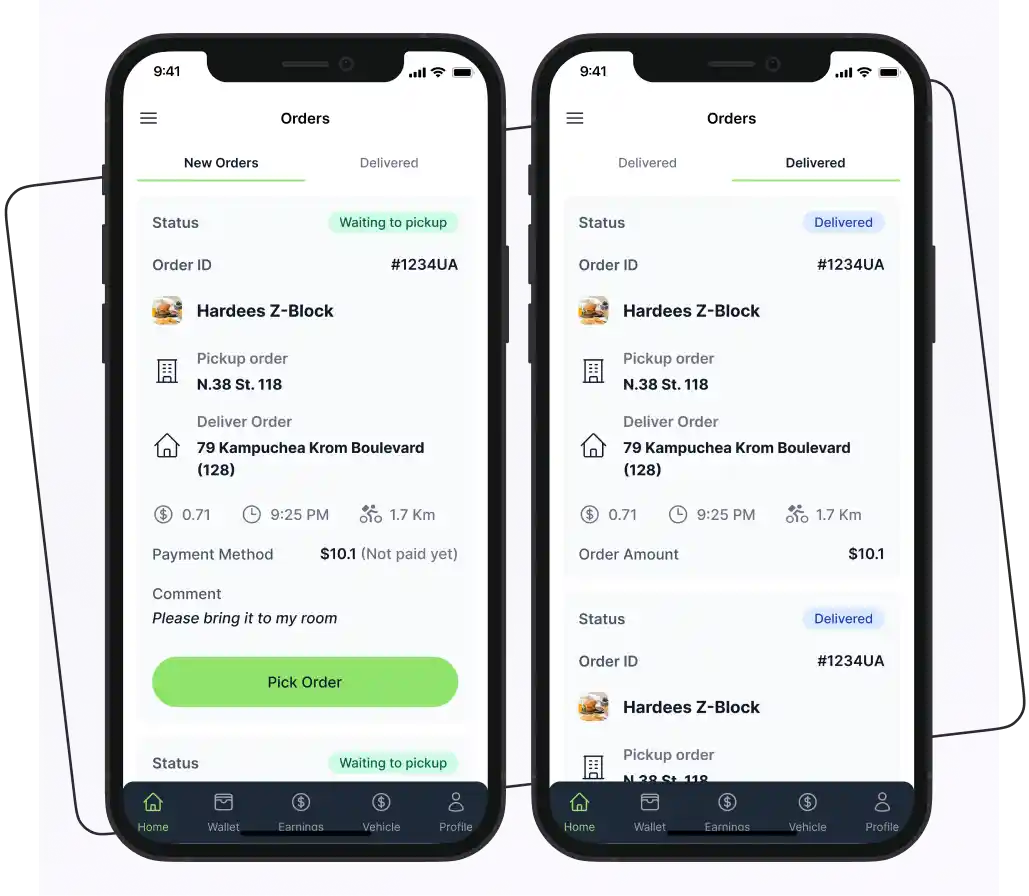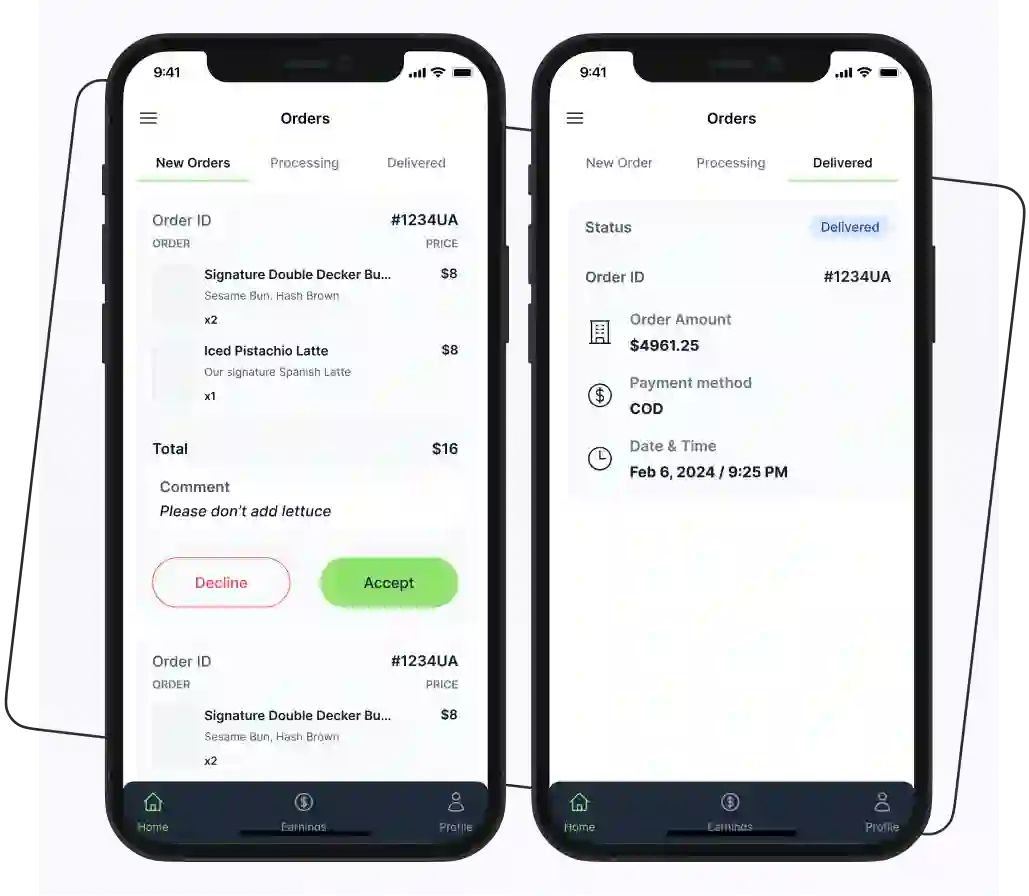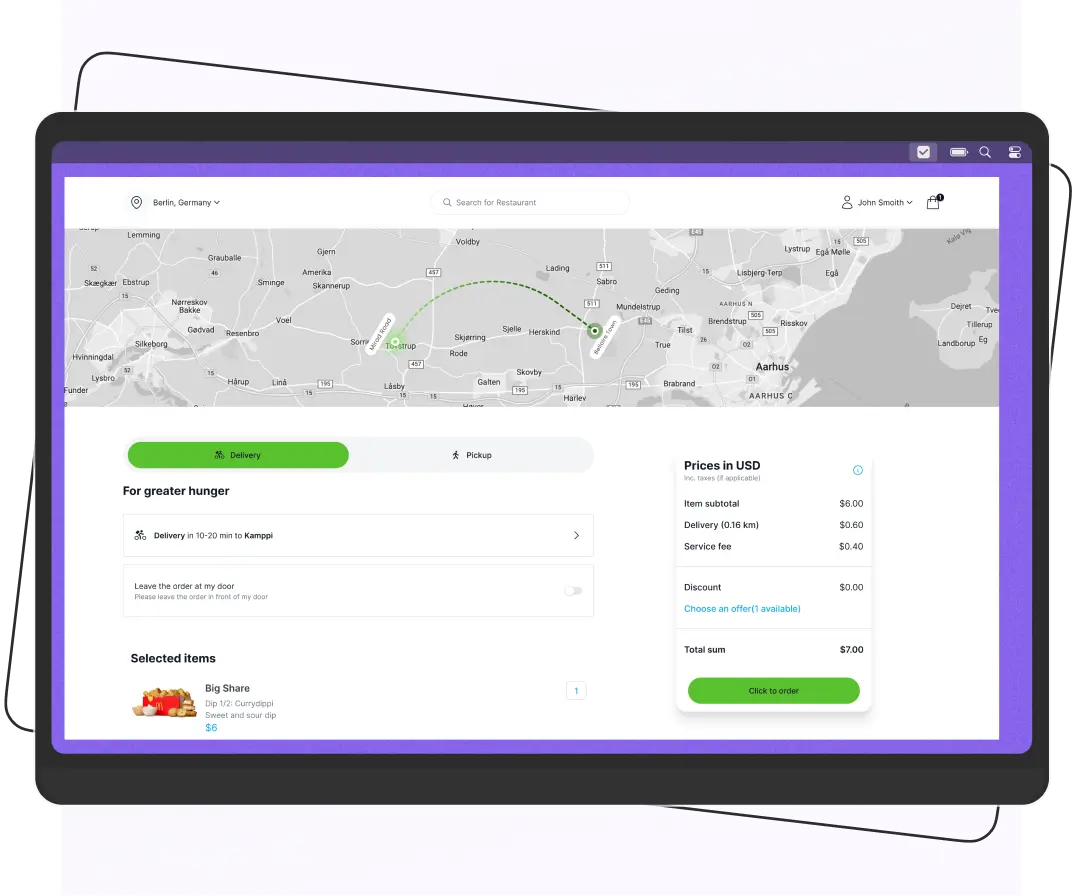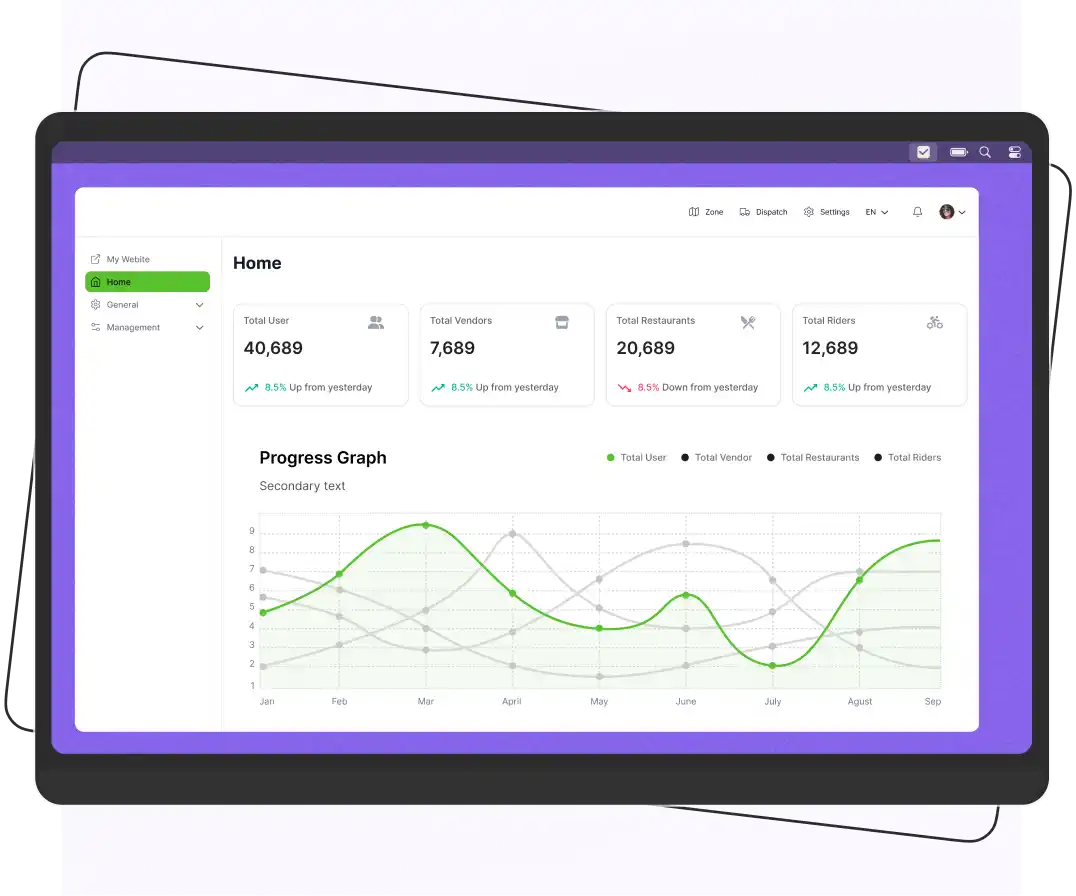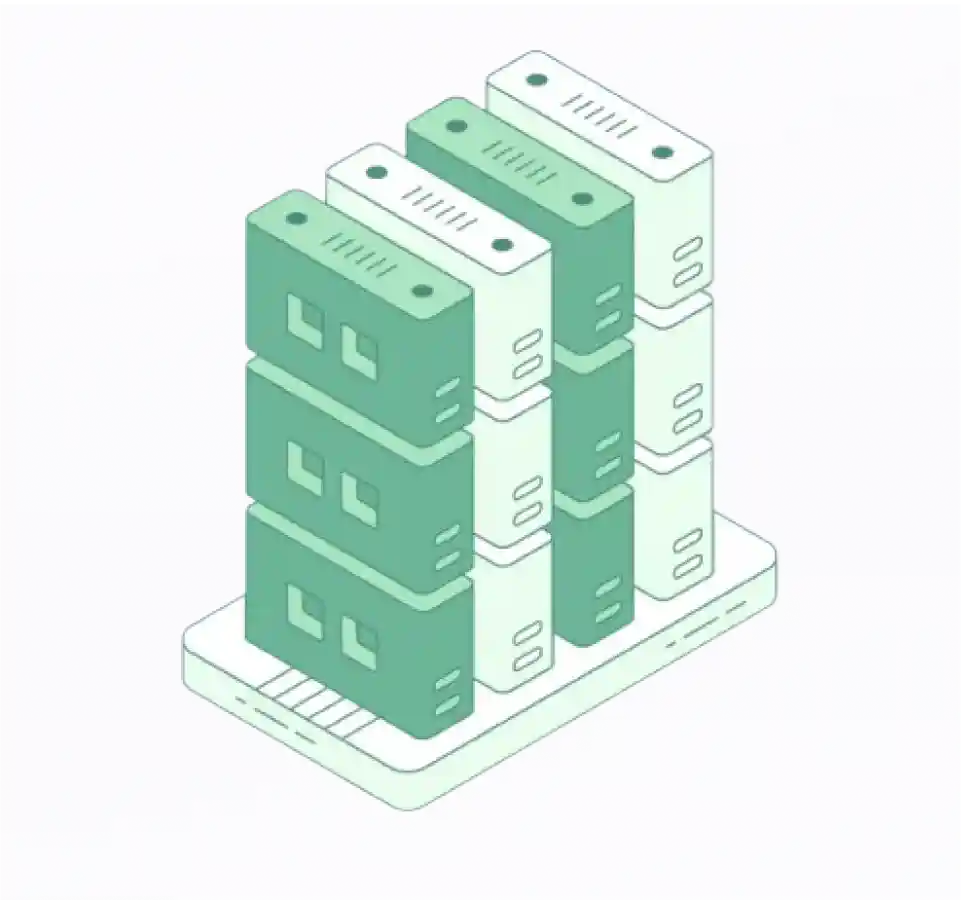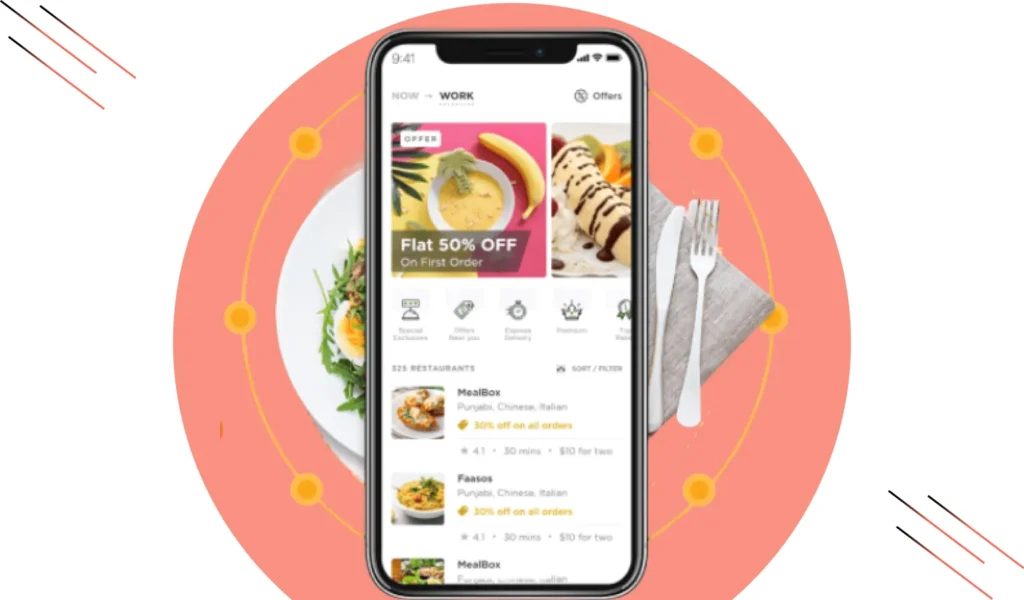
Thinking about launching your all-in-one delivery platform? Whether it’s food, groceries, medicines, or even courier services, a Rappi clone app could be exactly what you need. Designed for versatility, this multi-service app is perfect for entrepreneurs ready to enter the growing on-demand economy.
With a Rappi clone, you can bring together multiple delivery services under one roof and give your customers a fast, smooth, and reliable experience, all managed from a single platform. It’s a smart way to start your delivery business without building everything from scratch.
In this blog, we’ll cover everything you need to know about how to build your app like Rappi.
Let’s get into it!
Supercharge your deliveries with Enatega.
Launch NowWhat is Rappi?
Rappi has quickly become a household name across Latin America. It’s a one-stop store for all delivery services. It has changed the way people get food, groceries, and more delivered right to their doorsteps.
In addition to food and grocery delivery, Rappi is expanding its services to include travel, insurance, and more. Currently, it operates in nine countries, including Mexico, Colombia, Argentina, and Brazil.
Rappi was included in Time magazine’s list of influential companies.
In February 2025, the Rappi delivery app reached over 2.9 million monthly active users. With over 150 million downloads and partnerships with more than 125,000 restaurants, it’s clear Rappi isn’t slowing down anytime soon.
According to Statista, Rappi was the first Colombian startup to reach a valuation of over $1 billion, becoming a “unicorn”.
Unique Features of Rappi
- Offer subscription service “Rappi Prime” that offers unlimited deliveries and other perks.
- Rappi offers its credit card with various benefits like no annual fee, cashback, and up to 18 months of interest-free purchases.
- Incorporates AI for improved search functionality and personalized recommendations.
- Offer ultra-fast delivery in select areas.
How Does Rappi Make Money?
Rappi makes money using these methods:
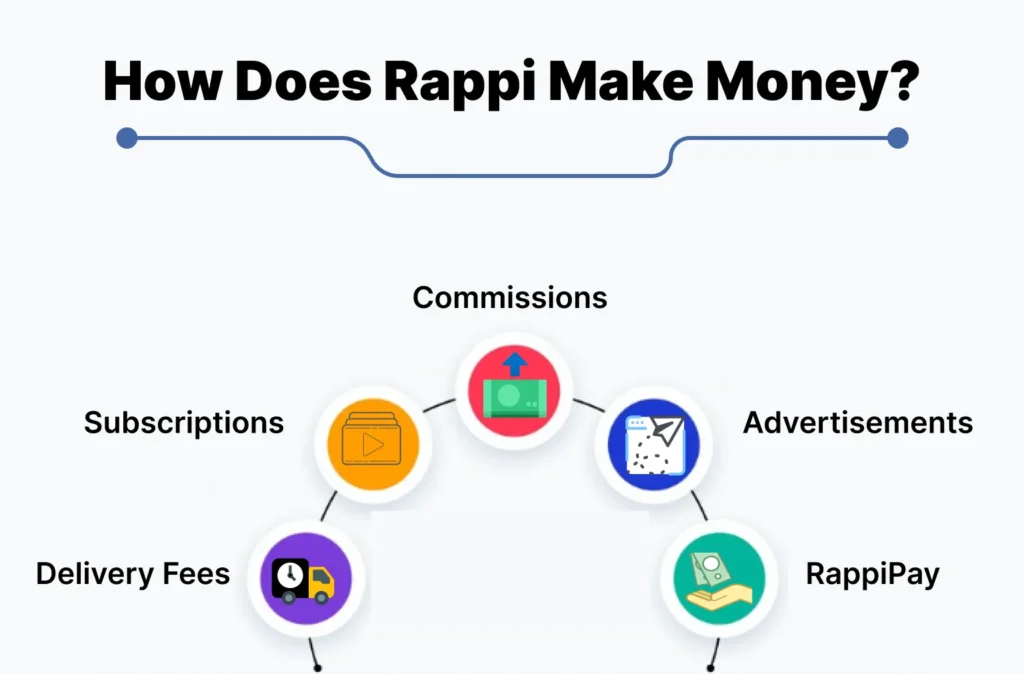
Delivery Fees
This is Rappi’s main income source. Every time a delivery is made, the user pays a fee. The fees can change based on demand or distance.
Subscriptions
Rappi Prime is a subscription service that allows users to enjoy free deliveries for a monthly fee. This helps users save money if they order often, and Rappi gets regular income.
Commissions
Rappi earns money from restaurants and shops it partners with. When users order from these places, Rappi takes a percentage of the sale.
Advertisements
Businesses can pay to be featured on the Rappi app, which helps them get noticed by users.
RappiPay
Rappi has a digital wallet service called RappiPay. Users can pay for things, transfer money, and even take out loans. Rappi might charge small fees for these transactions.
What is a Rappi Clone?
The Rappi clone app is a ready-made, customizable solution that enables you to launch your on-demand delivery service quickly.
Whether you’re delivering food, groceries, medicines, or other products, this app connects customers, delivery drivers, and businesses effortlessly.
It’s a scalable, feature-rich platform designed for easy integration, helping entrepreneurs establish their businesses quickly and efficiently.
Services Offered With Rappi Clone Script App
Creating a Rappi clone involves integrating various modules to enhance functionality and user experience. Here are some services you can offer with the Rappi clone script app.
- Food delivery
- Grocery delivery
- Flower delivery
- Package delivery
- Medicine delivery
- Beverage delivery
- Meat delivery
- Stationary delivery
Workflow of a Rappi Clone App
Creating a smooth and reliable food and grocery delivery experience requires a well-organized system.
Here’s a step-by-step process of how a Rappi clone app works.
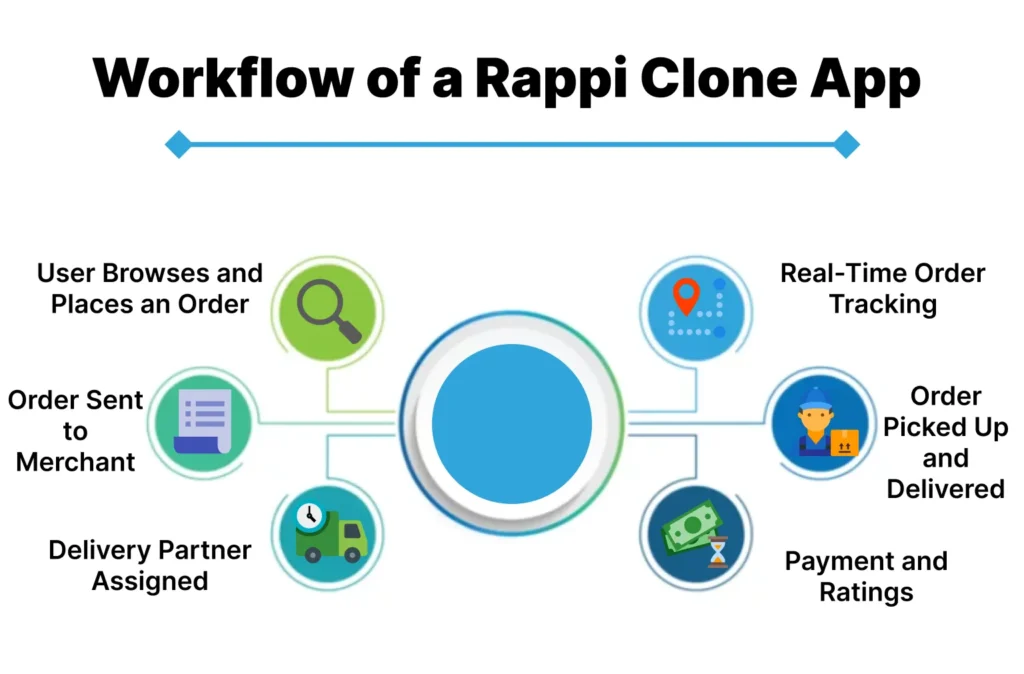
1. User Browses and Places an Order
The user opens the app, browses nearby restaurants or stores, and selects the items they want. After adding everything to the cart, they proceed to checkout and place the order.
2. Order Sent to Merchant
Once the user confirms the order, the merchant (restaurant or store) receives the details in their dashboard. They review it, accept it, and start preparing the order.
3. Delivery Partner Assigned
The merchant is preparing the order, the system automatically assigns a nearby delivery partner. The delivery rider receives the pickup details and estimated delivery time.
4. Real-Time Order Tracking
Users can track the order in real time, from preparation to pickup and delivery. They’ll see updates like “Order confirmed,” “Out for delivery,” and an ETA for arrival.
5. Order Picked Up and Delivered
Once the order is ready, the delivery partner picks it up and heads to the user’s location. The app provides turn-by-turn navigation to ensure timely delivery.
6. Payment and Ratings
Payment is processed either online (via card or wallet) or in cash, depending on the user’s choice. After the order is delivered, the user can rate the delivery partner and merchant, helping improve service quality.
Benefits of Building the Rappi Clone
Building a Rappi clone offers numerous advantages for businesses looking to enter the on-demand delivery market.
Here are some key advantages.
| Benefits of Building the Rappi Clone App |
| Cost-effective: Building a Rappi clone is generally less expensive than creating a unique app from scratch. It helps businesses save money and avoid unnecessary expenses. |
| Faster Launch: One of the major perks of using a Rappi clone is the ability to launch the app quickly. Businesses can enter the market sooner and start attracting customers right away. |
| Customization: With a food delivery app clone, businesses can customize the platform to fit their specific needs. This includes adjusting the branding, adding features, and modifying modules to create a unique user experience. |
| Multi-Category Delivery: The app can handle various types of deliveries, such as food, groceries, and more, all from a single platform. This versatility makes it appealing to a broader audience. |
| Access to a Larger Market: Using a delivery app allows businesses to reach a wider customer base. This increased visibility can lead to more sales and growth opportunities. |
How to Build the Rappi Clone App?
If you’re planning to build an app like Rappi, there are several steps you’ll need to follow. Here are some steps to help you build a great food app like Rappi.
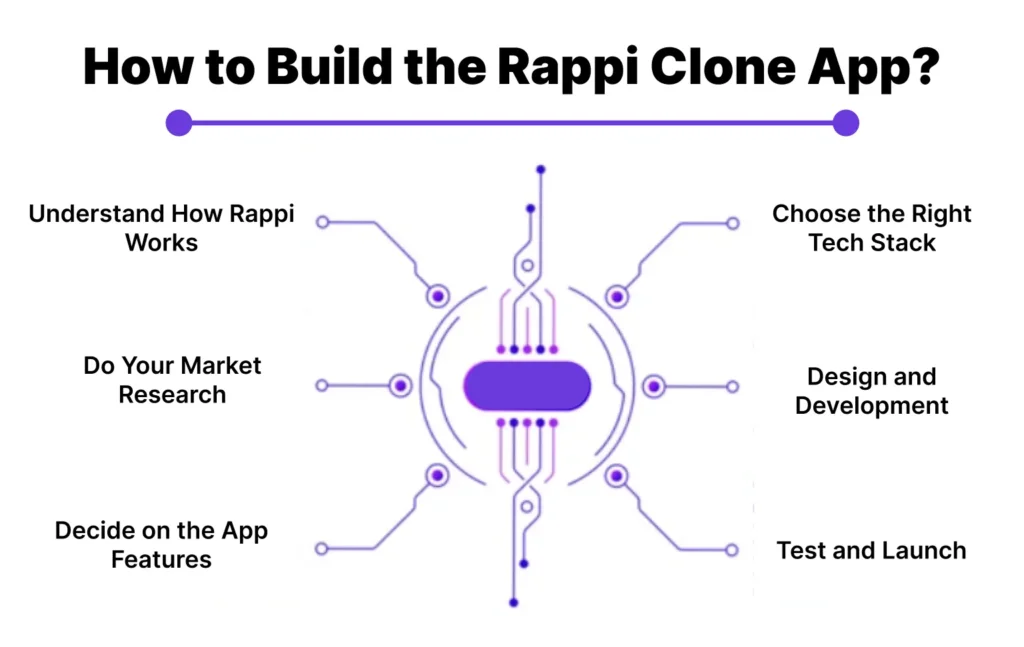
1. Understand How Rappi Works
Before jumping into development, it’s important to fully understand Rappi’s business model. What services does it offer? How does it earn revenue? The more clarity you have on how Rappi operates, the better you’ll be able to replicate (and improve on) its model.
2. Do Your Market Research
Next, take time to study the market. This step is all about identifying opportunities and avoiding pitfalls.
- Look at your potential competitors. What are they doing well? Where are they falling short?
- Figure out what your target users want. Their expectations will shape your product.
3. Decide on the App Features
Now, list out the features you want to include. Be realistic, adding every possible function might sound good, but it’s better to focus on what matters.
Here is a list of features that you should include in your app.
| User App | Store App | Rider App | Admin |
| Sign up | Item management | Profile management | User management |
| Multiple language | Store management | Pickup information | View stores |
| Pop-up notification | Offers management | In-app communication | Earning reports |
| Advanced filters | Order notification | Check earnings | Manage stores |
| Order tracking | Order accept/reject | Order status updates | Manage user feedback |
| Easy payment | Assign deliveries | ||
| Review and rating | |||
| Tips option | |||
| Takeaway and delivery options | |||
| Contactless delivery | |||
| Scheduled deliveries |
4. Choose the Right Tech Stack
This is where you decide what technologies you’ll use to build your app. The right tools will depend on your budget, timeline, and scalability goals. Popular choices include:
- Frontend: React Native or Flutter
- Backend: Node.js, Express
- Database: MongoDB, PostgreSQL
- APIs: Google Maps, Stripe, Twilio
5. Design and Development
Good design is not just about looks, it also affects usability. Create wireframes, get feedback, and then move into full development. Keep the user experience smooth, clean, and intuitive.
6. Test and Launch
Before going live, thoroughly test your app. Fix bugs, check performance, and make sure everything works across different devices. Once you’re confident, launch it and start gathering user feedback right away.
Cost of Rappi Clone App Development
App development cost is an important thing to consider when wanting to build a new app. Look at the table below and understand the estimated cost of building the Rappi app clone.
| Cost Factor | Estimated Cost |
| Market Research | $1,000 – $3,000 |
| UI/UX Design | $2,000 – $5,000 |
| Backend Development | $5,000 – $15,000 |
| Frontend Development | $4,000 – $12,000 |
| Payment Gateway Integration | $1,000 – $3,000 |
| Admin Panel Development | $2,000 – $5,000 |
| Testing and QA | $1,000 – $3,000 |
| Deployment | $500 – $1,500 |
| Maintenance and Support | $500 – $2,000/month |
| Total Estimated Cost | $17,000 – $49,500 |
Factors that Affect App Development Cost
Here are a few factors that affect app development cost.
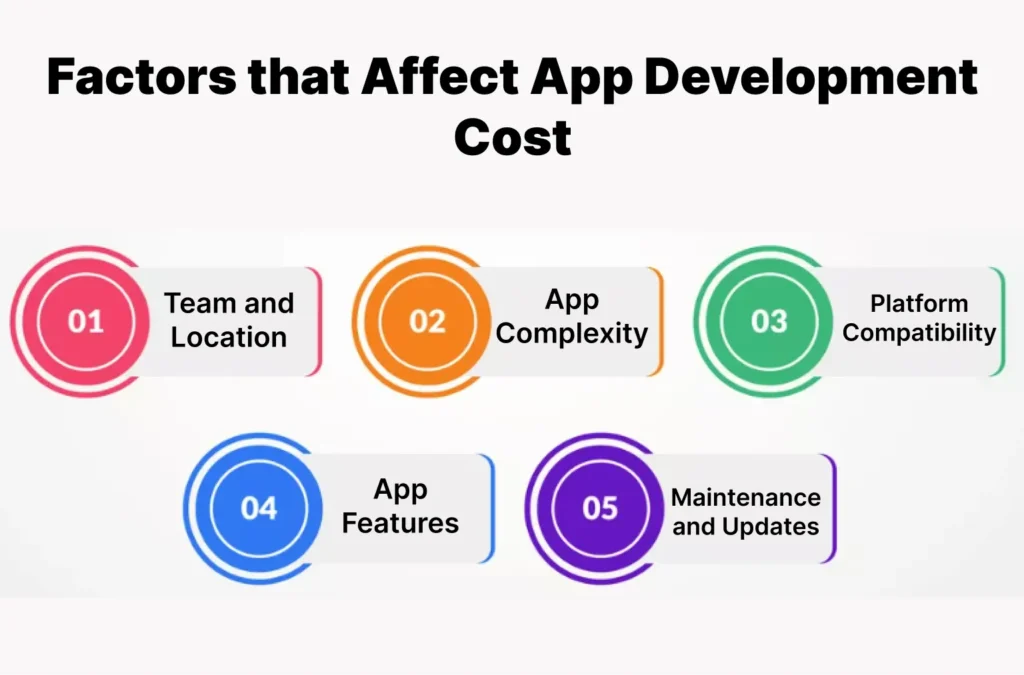
Team and Location
- Geographic Location: The cost can vary based on where the development team is located. Teams in areas with lower wages can help reduce costs, but may lead to communication challenges.
- Onshore vs. Offshore: Onshore teams (in your country) often work better together, but they can be more expensive.
App Complexity
- Simple vs. Complex Apps: Basic apps are cheaper to build. However, apps with advanced features require more time and resources, significantly increasing costs.
Platform Compatibility
- Number of Platforms: Developing for both iOS and Android can double the costs. Adding web or desktop versions increases expenses even further due to the need for different developers and testing.
App Features
- Additional Features: Extra features can raise the total development cost, as they require more time and resources.
Maintenance and Updates
- Ongoing Costs: After launch, apps need regular updates and maintenance, which can add 20% or more to the initial development costs each year. This includes bug fixes, feature additions, and hosting fees.
Supercharge your deliveries with Enatega.
Launch NowConclusion
With over two million apps competing for user attention on Google and Apple platforms, according to Statista. Businesses face significant challenges, particularly in saturated markets.
A super app, such as a Rappi clone, can effectively address this imbalance and enhance user engagement.
If you're encountering difficulties in developing your Rappi app clone, Enatega is here to help. Our team of experts has the required skills and experience necessary to create a standout app tailored to your needs.
Book a free demo with us today and launch your super app in just five days.












 IOS
IOS Android
Android Web
Web